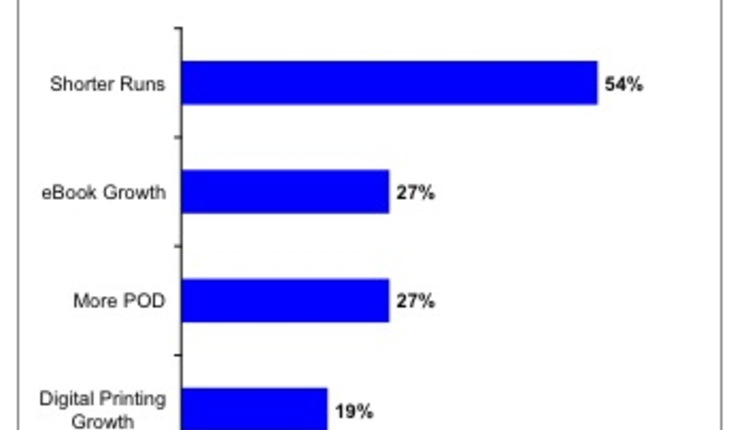Producing bills, statements and other transactional documents was one of the earliest applications of high-volume digital printing and today remains an important market for digital providers. INTERQUEST estimates that transactional printing generates more than one-quarter of all digital impressions produced in North America. So where is the transactional market in light of the recent recession and the ongoing trend towards electronic delivery? INTERQUEST recently conducted in-depth interviews with major transactional providers in North America to better understand these and other issues impacting transactional printing. The findings are published in their report, "North American Transactional Printing: Market Update and Forecast (2009-2014)."
Although the recession has impacted the entire printing industry, digital print providers in general have fared somewhat better than conventional printers, and transactional printing — despite the dramatic hit to the finance industry — has done better than other sectors, such as direct mail advertising. Transactional printers have not been unscathed, however, as customers demand deeper price concessions and reduce the page count and frequency of many transactional mailings. Most troubling is that the recession seems to have given transactional mailers an even stronger push towards electronic delivery as a cost-saving alternative to print.
Overall, we project that transactional print volume will decline at an annual rate of about 2.5% from 2009 to 2014. Black-and-white and highlight-color transactional output will decline somewhat faster, while full-color transactional impressions will grow by nearly 26% annually over this period.
Full-color transactional printing is growing aggressively as print quality improves, and the cost to produce it decreases. We find full-color transactional output used for three main reasons:
- To eliminate preprinted forms — Color is used to produce logos and other static elements, which were previously preprinted. Most of this variety of output is currently produced on high-speed inkjet presses.
- To enhance transactional documents — Database-driven, full-color charts and graphics are used to make the content of a transactional document more explicit or improve customer service in some manner. Because of the quality requirements and shorter run lengths, most of this output is produced on full-color, toner-based equipment.
- To use transactional documents for marketing purposes (i.e., TransPromo) — Single-pass, full-color, variable content is used to promote a product or service on a transactional document. The promotional content is typically tied to customer data. As with the elimination of preprinted forms, most of this output is currently produced on inkjet presses.
Our surveys of the market find that TransPromo is, indeed, growing aggressively, but that most of that growth is concentrated in the hands of a few, very large producers. This will undoubtedly change over time as more printers (commercial and in-house) acquire the latest generation of high-speed continuous-feed inkjet presses. According to our study, about half of the organizations that produce full-color transactional printing also produce TransPromo applications. Furthermore, these respondents predict their TransPromo work will grow at an annual rate of more than 40%.
We project growth in the range of 30% per year for TransPromo printing over the next few years. It is still at an emerging stage, so positive adoption with be reflected in a high growth rate. Yet the technology is available, many service bureaus are committed to the application, and an increasing number of transactional mailers seem to realize the benefits of merging promotional and transactional content. The window of opportunity for this application, however, will not stay open forever as electronic delivery alternatives steadily erode hard-copy transactional output. Although electronic diversion will chip away, transactional printing remains for now one of the largest market segments served by digital production printing, and one poised for significant change in the near future.
DAVID DAVIS is a director for INTERQUEST, a market and technology research and consulting firm focused on the digital printing industry. For more information or to order the INTERQUEST study "North American Transactional Printing: Market Update & Forecast (2009-2014)," call 434-979-9945 or visit www.inter-quest.com.


















